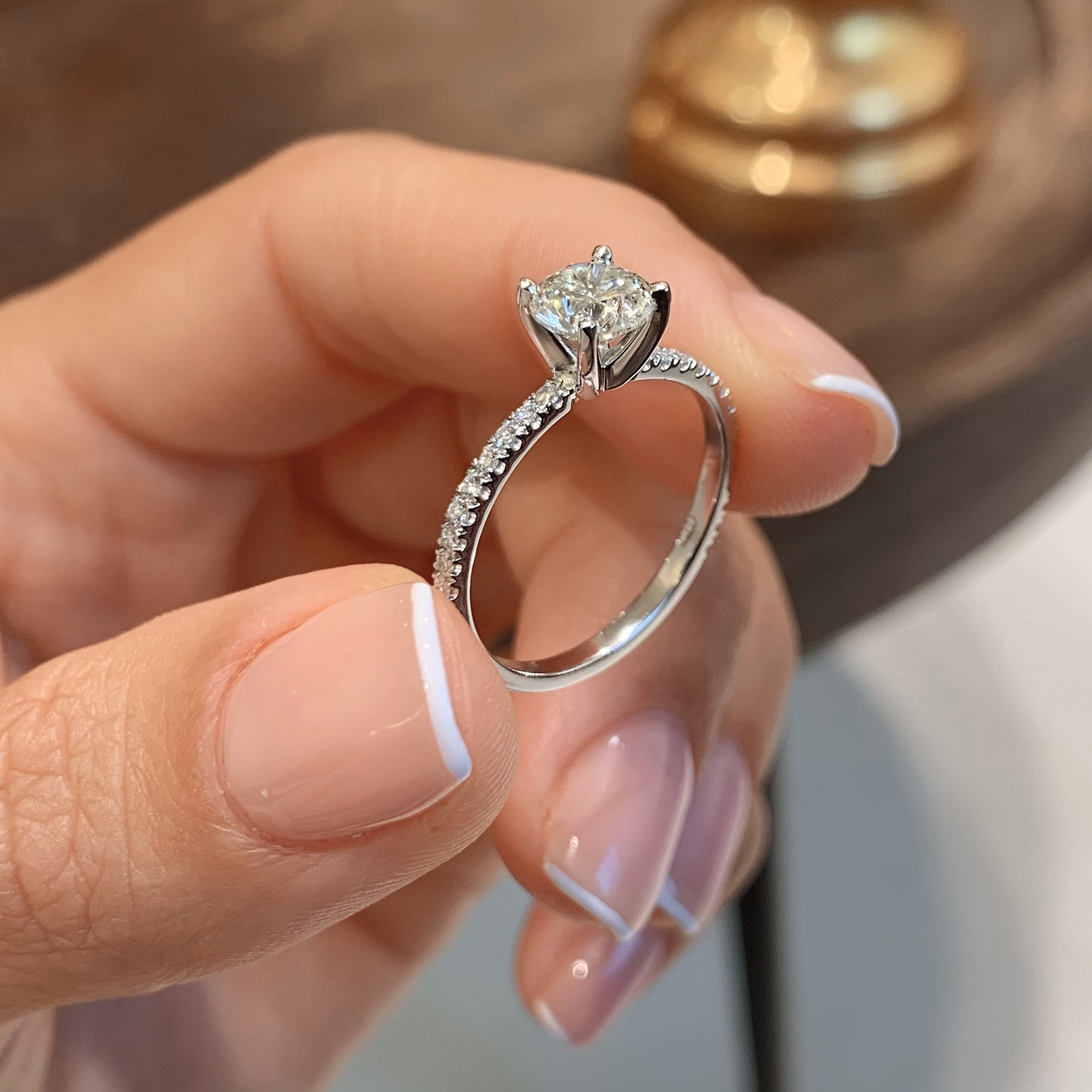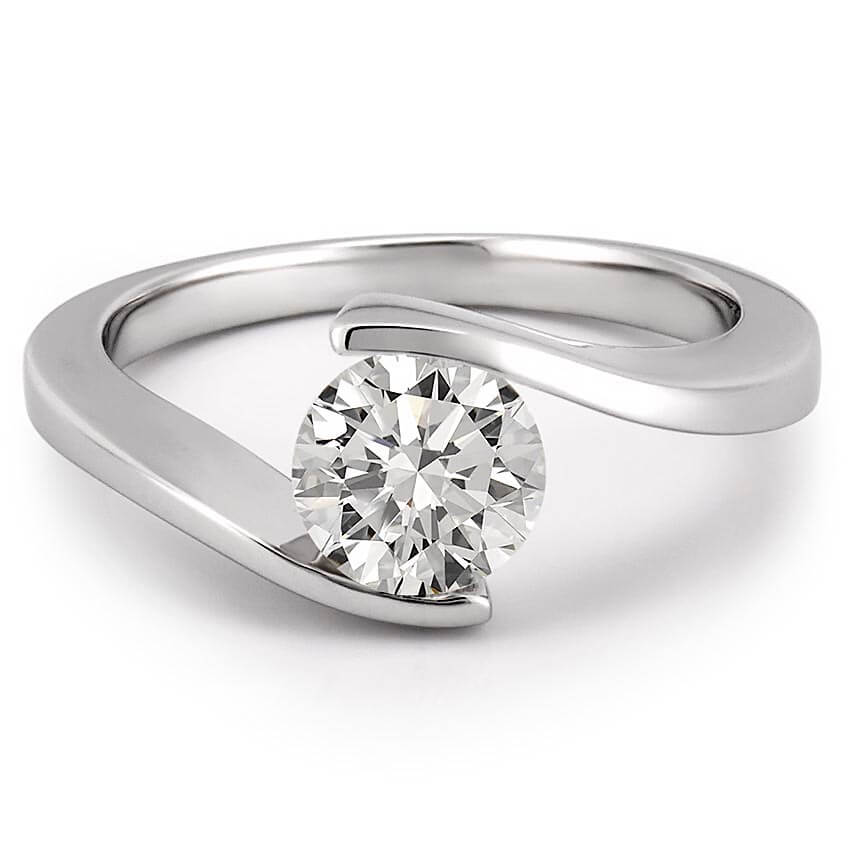The Top lab grown diamond engagement rings Trends for This Year
Why Laboratory Grown Diamond Involvement Rings Are the Perfect Selection for Eco-Conscious Couples
Lab-grown Diamond interaction rings present an engaging choice for couples that focus on sustainability. These rubies supply a striking option to conventional mined stones, considerably decreasing ecological damage. They are produced making use of sophisticated strategies that ensure both top quality and sparkle. As awareness of ethical sourcing expands, lots of couples are reconsidering their selections. What ramifications does this change have for the future of the Diamond industry?

The Environmental Effect of Conventional Diamond Mining
Although Diamond mining has long been commemorated for its attraction and stature, the ecological consequences of typical mining practices are increasingly concerning. The extraction of rubies commonly involves considerable land disturbance, leading to logging and environment loss for plenty of varieties. Additionally, the procedure takes in substantial amounts of water, which can diminish local resources and negatively affect bordering neighborhoods. Toxic chemicals utilized in mining operations can pollute neighboring water sources, further jeopardizing both human populaces and wild animals.
Moreover, the carbon footprint connected with carrying mined rubies contributes to the total ecological toll. The heavy equipment and tools needed for mining procedures add greatly to greenhouse gas emissions. As recognition of these issues grows, many consumers are starting to wonder about the sustainability of conventional Diamond sourcing. This change in viewpoint highlights the immediate requirement for even more ecologically pleasant choices, such as lab-grown rubies, which promise to reduce the environmental effect while preserving the charm and value of Diamond fashion jewelry.
The Process of Creating Lab-Grown Diamonds
Lab-grown diamonds are developed with 2 main methods: High Stress Heat (HPHT) and Chemical Vapor Deposition (CVD) The HPHT procedure imitates the all-natural problems under which diamonds create in the Earth's mantle. It entails subjecting carbon to severe stress and temperature, leading to the formation of carbon atoms right into Diamond structures. On the other hand, the CVD approach enables the growth of diamonds in a controlled atmosphere. This strategy makes use of a gas mixture containing carbon, which is energized to develop plasma, making it possible for carbon atoms to down payment onto a substrate and grow layer by layer right into Diamond crystals.
Both methods produce rubies that are chemically and literally identical to all-natural rubies - lab grown diamond engagement rings. The selection of technique often depends on the desired characteristics and size of the final treasure. This cutting-edge strategy to Diamond development not only supplies a sustainable alternative however likewise permits higher openness in the sourcing of materials
Quality and Radiance of Lab-Grown Diamonds
While numerous might assume that lab-grown diamonds differ in quality from their natural equivalents, they actually exhibit similar radiance and visual appeal. Lab-grown diamonds are created making use of innovative modern technology that replicates the all-natural problems under which diamonds develop, leading to stones that possess identical physical and chemical properties. These rubies achieve the very same outstanding clarity and color grading as extracted diamonds, making them equivalent to the naked eye.
In terms of radiance, lab-grown diamonds typically display premium light performance due to their precision-cut facets. The strenuous quality assurance during manufacturing assurances that these diamonds meet high requirements, enhancing their aesthetic allure. Furthermore, they are offered in a range of sizes and shapes, allowing pairs to discover the perfect ring to match their personal design. Inevitably, lab-grown rubies offer an exquisite mix of elegance and quality, making them an attractive selection for involvement rings.
Moral Considerations in the Diamond Industry
As consumers come to be significantly mindful of the ethical ramifications surrounding Diamond sourcing, the discussion around the Diamond sector has changed considerably. Issues concerning problem diamonds, often referred to as "blood rubies," have motivated require greater openness and accountability in mining practices. These diamonds are mined in war areas and marketed to fund armed problem, elevating major ethical concerns for consumers. In addition, the environmental impact of conventional Diamond mining has come under analysis, with problems such as habitat destruction and water pollution often highlighted.
In reaction, several have actually transformed to lab-grown diamonds as a much more ethical alternative. These rocks are created in controlled settings, removing the risks connected with mining. Lab-grown rubies appeal to customers looking for to make liable selections that align with their worths. The growing need for moral techniques remains to improve the Diamond industry, promoting sustainable and humane sourcing approaches.
Cost-Effectiveness of Lab-Grown Diamonds
Lab-grown rubies provide a compelling choice for consumers seeking economical interaction rings - lab grown diamond engagement rings. Valued significantly less than their natural counterparts, they supply superb worth for cash without compromising quality or appearance. This affordability makes lab-grown diamonds an eye-catching option for budget-conscious pairs
Lower Price Factor
Numerous pairs are uncovering that choosing for lab-grown Diamond interaction rings can significantly lower their total expenses without compromising top quality or beauty. These rubies commonly cost 30% to 50% much less than their mined equivalents, making them an eye-catching option for budget-conscious consumers. The rate benefit occurs from lower manufacturing prices and a much more efficient supply chain, which eliminates the expenses related to mining. Because of this, couples can spend in larger stones or even more intricate setups, boosting the overall aesthetic of their rings. This price not just permits a much more customized option however likewise aligns with the worths of eco-conscious couples that prioritize sustainability while continuing to be economically smart. Lab-grown diamonds provide an ideal blend of sophistication and economic climate.
Worth for Cash
The cost-effectiveness of lab-grown rubies prolongs beyond their initial cost, using extraordinary worth for cash. Unlike all-natural rubies, lab-grown options can be approximately 40% much less pricey while preserving the very same physical and chemical buildings. This affordability allows couples you could try here to purchase bigger or higher-quality rocks look at this now without surpassing their spending plans. Furthermore, the resale worth of lab-grown rubies is progressively enhancing, making them a more feasible choice for future financial factors to consider. Additionally, lab-grown diamonds typically come with reduced environmental and ethical costs, supplying couples with comfort. By picking lab-grown rubies, eco-conscious couples not just conserve cash but likewise contribute to lasting methods, improving their general value suggestion in the precious jewelry market.

Personalization Options for Lab-Grown Engagement Rings
Exactly how can couples ensure their engagement ring mirrors their special romance? Personalization alternatives for lab-grown Diamond interaction rings supply a suitable option. Couples can pick from different Diamond forms, including round, princess, or oval, enabling them to choose a design that reverberates with their individual aesthetic.
Additionally, they can choose the setup-- be it solitaire, halo, or vintage-inspired-- guaranteeing the ring matches the Diamond's luster. Metal options, such as white gold, yellow gold, or climbed gold, additionally boost customization, accommodating specific tastes.
Couples can integrate meaningful inscriptions, including a sentimental touch that represents their bond. With these substantial modification options, lab-grown Diamond interaction rings not only personify a pair's love however additionally mirror their worths, making them an ideal choice for eco-conscious partnerships. Eventually, these rings end up being a real representation of their unique trip together.
Often Asked Inquiries
Just How Do Lab-Grown Diamonds Contrast to All-natural Diamonds in Value?
Lab-grown rubies generally set you back 20-40% much less than all-natural rubies, using comparable top quality and appearance. Their lower rate factor makes them an enticing alternative, their website particularly for budget-conscious customers seeking lasting and ethical alternatives in precious jewelry.

Are Lab-Grown Diamonds More Sturdy Than All-natural Diamonds?
Lab-grown diamonds have the same physical and chemical buildings as natural rubies, including longevity. Both types rack up a best 10 on the Mohs range, ensuring that lab-grown diamonds are similarly resistant to scratching and damages.
Can Lab-Grown Diamonds Be Re-selled Quickly?
Lab-grown rubies can be re-selled, but their market demand varies compared to natural rubies. While some buyers value their ethical beginnings, others may prefer natural options, possibly affecting resale worth and convenience of transaction.
What Are the Treatment Recommendations for Lab-Grown Diamonds?
Lab-grown rubies require normal treatment to maintain their luster. Cleaning with mild soap and warm water, using a soft brush, and staying clear of harsh chemicals will certainly assist protect their shimmer and stability for several years to come.
Are There Any Qualifications for Lab-Grown Diamonds?
Lab-grown rubies can be certified by reputable organizations such as the Gemological Institute of America (GIA) and the International Gemological Institute (IGI) These qualifications guarantee authenticity, adherence, and quality to market requirements for lab-created gems.
Both approaches produce diamonds that are chemically and physically identical to natural rubies. Lab-grown diamonds are developed using sophisticated innovation that duplicates the all-natural problems under which rubies create, resulting in rocks that possess similar physical and chemical buildings. Lab-grown rubies typically set you back 20-40% much less than all-natural rubies, offering similar high quality and look. Lab-grown rubies possess the very same physical and chemical residential or commercial properties as all-natural rubies, consisting of toughness. Lab-grown rubies can be marketed, yet their market demand differs contrasted to all-natural diamonds.